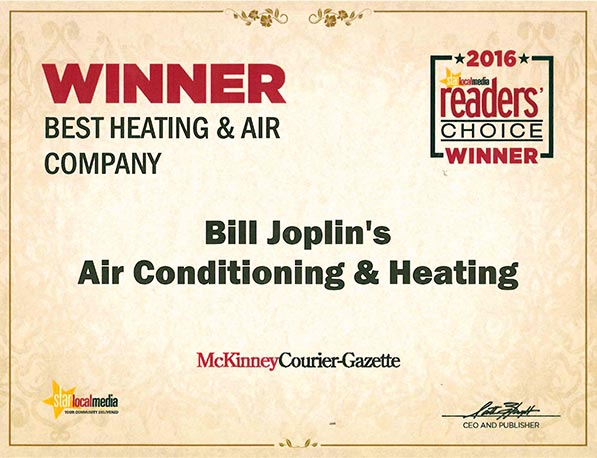Over the past 10 years, Americans have seen their energy costs go up. In fact, 10 years ago, the average monthly electric bill for a resident in this country was $78.24. However, today that average monthly electric bill is $107.28. Thankfully, even though energy costs will continue to climb, there are home improvement projects you can complete around your Fairview, TX home that can help you lower your energy consumption while still living in comfort.
Check for Drafty Doors and Windows
Drafts in your home can really make your energy costs soar. One easy way to check for drafts is to hold a lighted candle a few inches from windows, doors, pipes, vents, and baseboards. Then turn off all fans, air conditioning, and heating and watch the flame. If it flickers or blows out, you have a draft that needs to be sealed.
A caulk gun can seal gaps around windows although you may have to remove the old caulk first. You can use weather stripping to seal gaps under doors. Finally, if you have a draft around a vent you might have the wrong size of vent in place. You can replace the vent or add foam insulation around it. To complete this project, you’ll probably spend between $30 and $50 for materials, but you’ll save anywhere from $70 to $150 a year in heating and cooling costs.
Upgrade Your Appliances
If any of your large appliances aren’t Energy Star rated, they’re not as energy-efficient as they can be and you’re wasting money. An Energy Star refrigerator starts at about $899 for a side-by-side and $399 for a top mount. You’ll save around $80 a year in energy costs upgrading the refrigerator. An Energy Star dishwasher starts at around $230 and you’ll save approximately $30 a year on your utilities bill if you upgrade it. Finally, an Energy Star washing machine costs $600 or more and upgrading it will save $110 every year in energy costs.
Get a Programmable Thermostat
Another high-tech way to lower your energy costs is by having a programmable thermostat installed. These usually run between $60 and $300 dollars but they’ll save you about $180 in energy costs every year. You could also opt to go with a smart thermostat. These thermostats are very handy for people who have a schedule that constantly fluctuates since you can change the schedule remotely using you smartphone and an Internet connection. Some smart thermostats even have a monitoring system that lets you track energy use around your house and make adjustments where they’re needed.
Check Your Insulation
Fiberglass insulation rarely needs to be replaced unless it’s has water damage. However, if your home is older than 25 years, keep in mind that older building codes weren’t focused on energy efficiency, so an update to your insulation may be necessary. Also, if your insulation has been stamped down either from age or from people walking over it, then it could stand to be fluffed up again. Insulation needs trapped air to be effective and to work properly. Or, if your insulation is less than nine inches thick, adding another layer could provide extra savings.
Typically, adding insulation will cost about $300 and you’ll save around 30 percent on your energy bills after it’s done. While most people think about the attic when they think about insulation, you should also consider ceilings, basement walls, and crawl spaces.
Seal Your Ducts
If you have a heating and cooling system in your house that uses forced air, the ducts carry hot or cold air to different parts of your home. Unfortunately, the Environmental Protection Agency says that around one-fifth of this air escapes through leaks in the ducts. Therefore, you’re paying to heat or cool the empty space in your walls and your attic. To solve this problem, you can use duct sealant to repair leaks in any of your exposed ducts.
You can also examine the exposed ductwork for loose connections or corrosion. However, keep in mind that the majority of ductwork in your home isn’t visible or easy to reach. That’s why it’s important to call a HVAC professional to do an inspection and seal the joints, replace broken sections, insulate sections that pass through cold or hot areas like the attic, and seal leaks.
Change Out Your Light Bulbs
Even though the new fluorescent light bulbs may look weird when compared to the traditional incandescent light bulbs, the amount of money they save you over their lifespan more than makes up for it. Fluorescent light bulbs last anywhere from four to 10 times longer than incandescent light bulbs. Therefore, even though they may cost more initially, you’ll end up saving around $6 on your energy bill every year when you use them.
Stop Vampire Power Wasters
Standby power, also called vampire power, is power that’s consumed when an electronic device is in standby mode. Most computers and video game consoles with standby connections have a setting where you can adjust it to power-saving mode. Additionally, if you have any older power strips or adapters that are warm to the touch, you should replace them. Getting rid of these vampire power wasters can save nearly 10 percent on electric bills in the average home.
Install Storm Windows
Nearly 10 to 25 percent of your cooling and heating costs go right out your windows. While high-efficiency replacement windows or double-panes windows look great, they may also be costly to purchase and install, and so may not be the best choice for all homes. Instead, consider installing storm windows, which are mounted as additional windows outside of the primary windows.
Not only do storm windows help reduce street noise, the added air space between the two windows helps you stay warm in the winter and cool in the summer. Storm windows come in two-track, two-track slider, triple-track, and basement styles. You can buy 12 triple-track storm windows for around $1200, and installing them over your existing windows will reduce heat loss by around 25 percent.
Install an Energy-Efficient Door
Installing a new door is an ideal way to change the look of your house. However, it’s also perfect for helping you save money. An energy-efficient door has a tight seal to keep out drafts. Additionally, these doors have glass with a clear coating made to filter out UV radiation, which can damage and fade paint, upholstery, and carpet. This coating lets sunshine in to brighten up your home, but keeps out harmful and damaging radiation.
Landscape Your Yard
Chances are that when the original layout and positioning of trees was plotted for your lot, people were more interested in curb appeal than energy savings. However, when placed in the correct areas to shade the house from the sun, trees and shrubs can reduce the surrounding air temperature by as much as nine degrees.
Evergreens are good for providing a break from cold winds when they’re positioned away from the home at a distance of around three times the height of the trees. Deciduous trees are an ideal choice for most climates because they have leaves in the summer to provide shade, then they lose their leaves in the fall so sunlight can get through during the winter. Additionally, if you plant trees or shrubs to shade your outside air conditioning unit, you can increase its efficiency by around 10 percent.
Go for Low-Flow Water Fixtures
Not only will low-flow water fixtures help you conserve water, they’ll also help you save money. While low-flow fixtures will obviously help you save money on your water bill by reducing the amount of water your household uses, they’ll also help you reduce your energy costs since your water heater won’t have to heat as much water. The Energy Star program reports that simply installing low-flow water fixtures in your home can you help you cut your home’s water consumption by nearly 50 percent and save you around $145 every year.
Whether you want a new energy-efficient heating and cooling system installed or you’re looking for a maintenance plan that will keep your heating and cooling equipment running in fine shape, a heating and cooling specialist can help. Contact the professionals at Bill Joplin’s Air Conditioning & Heating at 888-414-4655 for help with lowering your energy costs.





